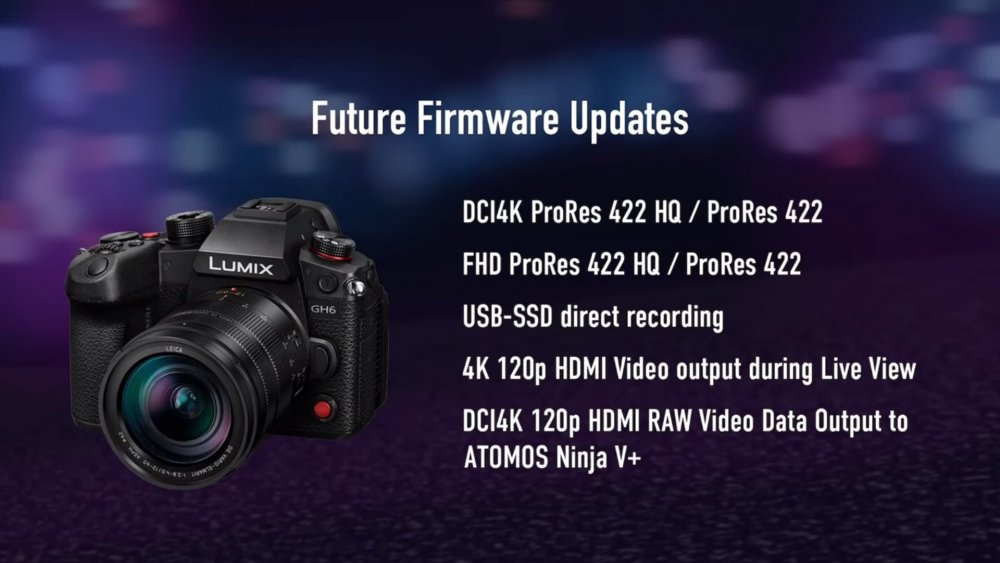-
Posts
2,531 -
Joined
-
Last visited
Content Type
Profiles
Forums
Articles
Everything posted by sanveer
-
“Developing the image sensors for the ALEXA 35 camera with ARRI shows our ability to develop high-end sensors that are low cost and high quality while maximizing performance,” said Ross Jatou, senior vice president and general manager of ISG at onsemi. I always assumed, that if these sensors are so good, and in such high end cameras, they would cost a fortune. It almost seems like OnSemi want a much larger customer base for a much wider (semi-pro) consumer base, almost like for Hybrid ILCs or perhaps like much cheaper like Cinema Blackmagic.
-
For a phone apparently made for cinematic video, shouldn't it atleast contain all the classical zoom ranges used for fimmmaking, to begin with?
-
The silence regarding him is eerie too. After youtube banned so many channels and an account of mine, I realised he may have been silenced. Or RED did something even stranger to him? Or maybe he's been cancelled? Pay some money, or use influence, and anything can be done to anyone.
-
Would love to see a shootout between the GH6 and the X-H2s. I am guessing for pure image quality it would win by a whisker, and for autofocus it would be much better (maybe not great though). For everything else (stabilization, high speed, low light etc, they would be closely matched). Did anyone figure who Panasonic got the sensor from? And why it's so lousy in non dynamic range boost mode?
-
Patent and IP Corruption in the United Stated is just monumental. Disney has been drinking the blood of customers since forever. And thanks to the rampant bribery, many of these corporations are more powerful than Senators and Governors.
-
Sony and Samsung presented papers on triple gain sensors (hough those sensors may not have been merging signal for the final image?). I wouldn't be surprised if this sensor has triple gain, with the previous dual gain sensor, specifically for highlights and shadows spaced out wider, and allowing the middle signal for improving merging details across a much wider range.
-
Write the story about 20-30 times, filling in smaller nuances, that help get characters, trigger points, back stories etc well developed. How about breaking up the scripts into small meal size bites, like parts of the story. And shoot some small portion of it, as a short film cum teaser of the film. It will help you get perspective, learn the ropes, and help investors get an idea on what to expect in terms of the final film. Also, I recommend not doing cinematography on your own film, as it interferes greatly with direction. Find an emerging cinematographer whose work you like, from vimeo or youtube and probably collaborate with him or her.
-
Interesting. Is it also simply a mismatch in refresh rates between the lighting in the shot setup, and the video frame rate setting of the camera? I read somewhere that this is visible in Sony and Fuji cameras too. So maybe this could be compared. Maybe its visible across many digital camera, regardless of dual gain signal or the regular signal circuitry.
-
Please do share the details here, too. (I find that the GH6 seems to have been improved in so many amazing ways. The 100MP handheld alone is pretty insane.).
-
We all know, that the Exposure Triangle is mostly not applicable for video. Because one cannot have super high shutter speeds for 24p video, or randonly keep varying the f-stop across frames or scenes. While ISO limits have probably becoming wider in terms of usability, camera which have minimum ISO for log profiles have lesser options, since the base ISO starts pretty high. While this may be acceptable for well controlled environments, it may not be possible for most run and gun shoots, or shoots without absolutely natural ideal lighting conditions (natural and cameras specs being coincidentally complimentary) or shoots without elaborate controlled lighting. So, would be be fair, that for video shooting, ILCs/DSLRs, not having internal NDs (whether manual or electronic), is actually a bad unfinished job. Because without internal NDs, the cameras are not truly factory ready for shooting video. They could be for photos, but not for video. So, why even make the video shooting devices without such NDs? What do you think?
-
Actually the Quad (Pixel) Theory is on the OM-1, and it is (IMHO) solely limited to the autofocus pixels. Panasonic's GH6 doesn't have the Quad Pixel CFA. Interestingly, OM is claiming to working on finalising more features, since the OM has some insane processing capabilities. I am hoping it does 14-bit HDR RAW, by combining multiple frames, like on smartphones. I hope it can also do smartphone kind of HDR video as well, at 10-bit 4-2-2, instead of merely 4-2-2.
-
I was thinking on similar lines. Either it does it like the photo modes of (single frame) uncompressed RAW on photos, or, that it does it like the Alexas, combining 2x14-RAW channels and creating a 16-bit frame (for video). While it would be superb, either way, if it were for video, it would obviously leapfrog the competition, just like the GH5 did, because it combines 2 exposures, having a lot more dynamic ranges and also having insane exposure latitude (way beyond everything at its price range and a lot beyond). This would mean that Panasonic finally gets much better quality photos (one of the complaints of M43 users was not having photos with much greater exposure latitude, like the 14-bit on larger sensor cameras). Usually sensor have many different readout speeds at different frame rates. So, it could also be possible, that Panasonic uses this sensor in another specialist camera, that does 16-bit video, instead of on the GH6. Though that would be a huge missed opportunity for the GH6.
-
"Featuring a 20% increase in resolution, the GH6 touts a new, higher-res Micro Four Thirds sensor." Isn't 20MP to 25MP a 25% resolution increase? Or am I missing something? So they count the sensor resolution, beyond the effective pixels?
-
At 27:45, he mentions 16-bit RAW. Which me6snd that the signal strength (can be further widened and?) can help with exposure latitude making it as good (if better than) RAW codecs on larger cameras. Though he mentions that it's for photo (for now?). Maybe, if it does external 16-bit RAW, that would be superb. Also, I hope Panasonic releases a much thinner version of that awful looking Yagn, for real-time compressions into an external RAW recorder (SSD) at 1:3 to 1:18, thereby circumventing that RED patent and also having a recorded for quicker turnaround.
-
Wasn't Sony having TSMC fan their sensors?
-
Except Sony, most other sensor manufacturers, especially of specialised sensors, don't really disclose sensor details, until much later, if at all. Also, if its a Canon sensor, I doubt Panasonic would wanna disclose it. They are anyway so guarded about sensor details. I wish Samsung were in the game, again. Though I doubt it. There is some secret code among sensor makers, and most make the same or similar sensors, and development seems almost, secretly, together or similar.
-
Interesting, most of the size increase seems to have been due to the new articulating screen and the sturucyursly sturdiness of the frame.
-
I don't know if this has been posted before, but this review is very important from a user's perspective (IMHO). Also, he tests a lot of things, especially in comparison to many previous M43 cameras, and also the A1 (for autofocus).
-
So it isn't a Sony sensor for a change(?). It wouldn't be TowerJazz Semiconductor/ Tower Semi, I am guessing, either. Like someone on some rumours blog suggested (photorumors/ 43rumors?), it's probably an ONSemi sensor. Maybe by not having 14-bit ADC and impressing it for a 16-bit image (having it limited to 12-bit, both ways, meaning recording and delivery), they could substantially reduce sensor costs, and not have a conflict of interest with Arri. Arri has like a few hundred sensors manufactured each year, and Panasonic hopes go have a few thousands, thus leveraging economies of scale and tech specs to (substantially) lower costs. Sony does dual gain, but that's quite different. Also, I am not sure Canon supplies sensor to Panasonic (they could if they don't see issues with specific markets). I also vaguely remember Panasonic saying it's similar to Arri or something on those lines. Interestingly, while some testers are mentioning banding lines when pointed towards lights, I though that that's something that's visible for the majority of CMOS sensor. Maybe even super fast sensors like the Z9 or A1 would have it under certain scenarios (the A9 did, I clearly remember). People seem to notice it now, because one guy mentioned it and everyone is pointing it towards flickering LED light sources now. Maybe having different rates of lights and sensor readout acerbates the problem (use the Synchro Scan feature to figure the right frame rate and shutter speed for you?).
-
Yes. Caleb mentioned that the new colour science is vastly improved.
-
-
Selective bias. Also, I hope Panasonic release a chart like Blackmagic does for the Shadows and Highlights for the 4k and 6k cameras, helping understand where almost perfect exposure would lay (is allocated) apart from the histogram, across ISOs (especially for extended ISO).
-
Waiting for Andrew's review. I believe he got to test the GH6 (for quite a while?).
-
As shared by @webrunner5, watch this guy instead





